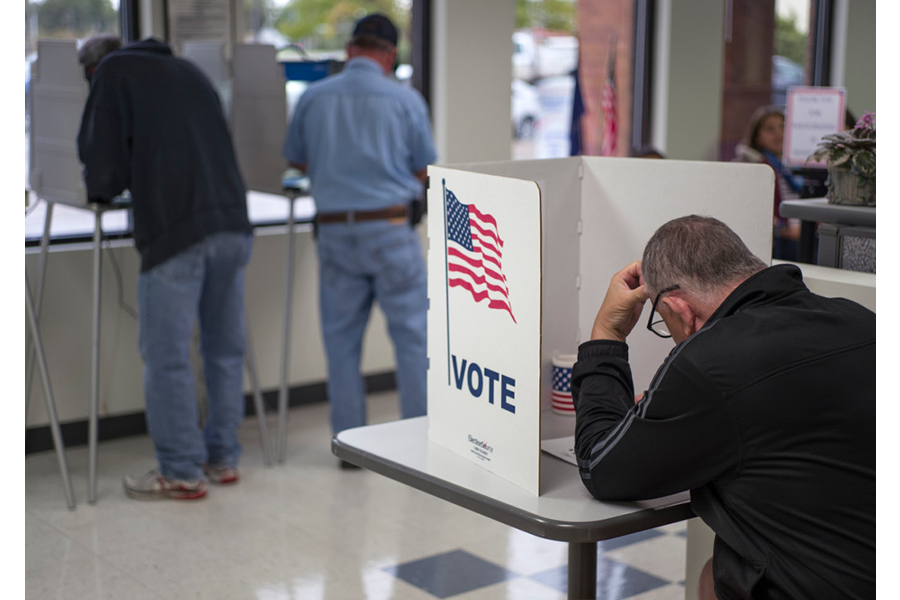Half a million US voters have already cast ballots. Does early voting matter?
Loading...
More than 450,000 voters cast their ballot before the second presidential debate aired, meaning neither Donald Trump or Hillary Clinton’s performances or recent campaign efforts factored into a number of voters’ decisions.
As candidates woo undecided or unmotivated voters during the last few weeks before the 2016 election, a sizable portion of the electorate has already cast their ballots through absentee or early voting avenues. Party operatives have pushed these options in their states, hoping that flexibility in the electoral process will encourage those less likely, or unable, to stand in line on Election Day to cast a ballot.
Early and absentee voting have become a more common practice in recent years. In 2012, 35 percent of voters turned in their ballots before the polls opened on Election Day, compared to just 16 percent in the 2000 presidential election.
In addition, absentee voting – once used only by students living outside of their home state, travelers, or those with illness or disabilities that keep them from making it to the polls – has become increasingly common, as has early voting, which allows voters to cast ballots at their polling place prior to Election Day.
Early voting, a newer innovation, is now offered in 37 states, where it attracts many minority voters in densely populated urban areas where long lines previously discouraged voters from turning out on Election Day.
By making the polls accessible to a greater number of voters, early voting has become a powerful tool that both parties seek to capitalize on in vital swing states, and one the Democrats accessed with some success to re-elect President Obama in 2012. While Mitt Romney won on Election Day in Ohio, Mr. Obama took the state when early voters, who may not have turned out otherwise, were included in the tallies.
Ohio Republicans are learning their lesson this year, and have pushed newly registered voters to cast their ballots early in 2016.
"We couldn't get decimated in early vote," Matt Borges, chairman of the Ohio Republican Party, told Cincinnati.com. "If you're a new registrant and you haven't voted by Election Day, I have to assume you're not going to vote."
Depending on the state, the process and restrictions vary, meaning some states, including Iowa and Wisconsin, have a higher rate of returned ballots thus far.
The most recent count of early voting, totaling around 450,000 as of Oct. 6 with more already in the mail at that point, includes ballots cast before the candidates had a second chance to square off on primetime television – and before revelations about Mr. Trump’s offensive comments regarding his sexual conduct with women came to light.
But candidates are still eager to push voters to the polls early, knowing some may not make it there on Nov. 8.
Even with ballots already turned in, it’s hard to gauge what the outcome will be in swing states. While states know how many registered Republicans or Democrats have turned in ballots, state laws prevent them from tallying up which boxes on those ballots have been checked. Instead, the numbers primarily hint to parties how effective they’ve been at pushing constituents to turn their ballots in early.








